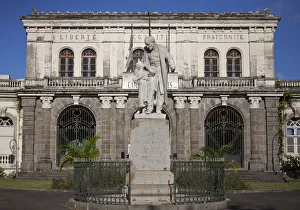Schoelcher Collection
"Victor Schoelcher: The Man Behind the Abolition of Slavery" In this collection of cartoons, caricatures, and portraits
All Professionally Made to Order for Quick Shipping
"Victor Schoelcher: The Man Behind the Abolition of Slavery" In this collection of cartoons, caricatures, and portraits, we get a glimpse into the life and legacy of Victor Schoelcher. Known as a French politician and anti-slavery campaigner in the 19th century, Schoelcher played a pivotal role in ending one of history's most brutal practices. Honore Daumier's cartoon depicts Schoelcher with his signature top hat, humorously highlighting his efforts to abolish slavery. Gill's drawing from "The Men of Today" showcases another humorous take on Schoelcher's fight against this injustice. These satirical illustrations shed light on how society viewed such an important figure during that time. Daumier's cartoon from "Charivari" further emphasizes the significance of Schoelcher's work by focusing solely on him and the abolition movement. It serves as a reminder that progress often faces resistance but can ultimately prevail. Le Bean rouge caricature by Victor Schoelcher himself adds an interesting twist to our understanding of him. Representing himself as a bean in Peter's train suggests both humility and determination—a symbol for his unwavering commitment to justice. The portrait captures Victor Schoelcher in 1880, showcasing his dignified presence and resolute gaze. This image reflects not only his political stature but also his dedication to fighting for equality. A meeting at Salon Litteraire de la Maison Hugo provides insight into the intellectual circles where ideas were exchanged during that era. Here, we see how influential figures like Hugo recognized and supported individuals like Schoelcher who fought tirelessly against slavery. The statue erected in Fort-de-France stands tall as a tribute to A. (Auguste) Schoelcher - perhaps related or inspired by Victor - reminding us all about their impact on Martinique’s history.







